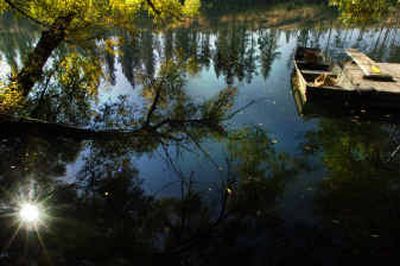Dischargers suggest water quality rules

Afraid that new Spokane River water quality standards will cost too much and demand more than can be delivered, major dischargers from Coeur d’Alene to Spokane are suggesting their own rules, backed by a scientific study.
It’s a dry subject, but one every urban homeowner should be paying attention to because rising sewer bills hang in the balance, said Lars Hendron, engineer for Spokane wastewater management.
“To me, there’s only so much money to be spent on a variety of things,” Hendron said. “This increase would be sizable.”
State ecologists expect to introduce, by next spring, new rules controlling what gets poured into the Spokane River, which includes treated wastewater from sewer plants in Spokane and Liberty Lake as well as discharges from Inland Empire Paper Co. and Kaiser Aluminum Corp. The cities and the industries aren’t sure they’ll be able to meet the new requirements, at least not without incurring millions of dollars in extra costs.
A coalition of entities that discharge into the Spokane River, or plan to, have released their own study that suggests what water quality standards can be met and what aquatic life can be maintained in the Spokane River. The coalition consists of Spokane, Spokane County, Spokane Valley, Liberty Lake Sewer and Water District, Kaiser, Inland Empire Paper, Coeur d’Alene, Post Falls and Hayden Regional Sewer and Water District. Inland Empire Paper Co. is owned by Cowles Publishing Co., which also owns The Spokesman-Review.
The Idaho collaborators are involved because similar regulations could be on the horizon for Idaho as federal regulators expect to impose similar water quality rules upstream.
The cities and businesses have an alternative plan for the Washington portion of the river. They plan a public meeting tonight to discuss their plan. The meeting, at 11707 E. Sprague Ave., is sponsored by the Spokane Valley Chamber of Commerce, and is scheduled to run from 5:30 p.m. to 7 p.m.
Governments and businesses are suggesting that rather than set a hard limit on the percentage of harmful pollutants in the river, state ecologists should allow levels to fluctuate.
Restrictions would be tighter, for example, while trout were spawning, but loosen up when fish and aquatic plants were less vulnerable. In return, governments and businesses discharging into the river would commit to using only the most advanced technology available for treating their wastewater.
“We want to protect the beneficial uses of the river, but we want to do that without bankrupting the community,” said Jim Correll, engineer for CH2MHill, the firm tackling the regulations for the cities and businesses.
But state ecologists say there might be times under the new river standards when water from sewer plants and industrial mills shouldn’t be dumped in the river no matter how advanced the treatment technology.
Water discharged from sewage plants and industrial mills contains ingredients that gobble oxygen from the river, the same oxygen that fish and aquatic plants need to survive.
To ensure there’s enough oxygen available for river life, ecologists are limiting the total maximum daily load of competing pollutants released from sewage and industrial plants.
There may be times when there isn’t enough water in the river for any wastewater to be discharged, said Jani Gilbert, spokesperson for the Washington Department of Ecology.
By the end of the month, ecologists expect to show the public proposed limits for total maximum daily loads of discharge from treatment plants.
At that point, Ecology will take reaction from the governments and businesses discharging into the river, as well as reaction from the general public.
Gilbert said the Ecology Department has reviewed the alternatives proposed by the governments and businesses.
Ecologists have suggested changes to the proposal, which the dischargers will have a chance to address before offering a final, alternative proposal.